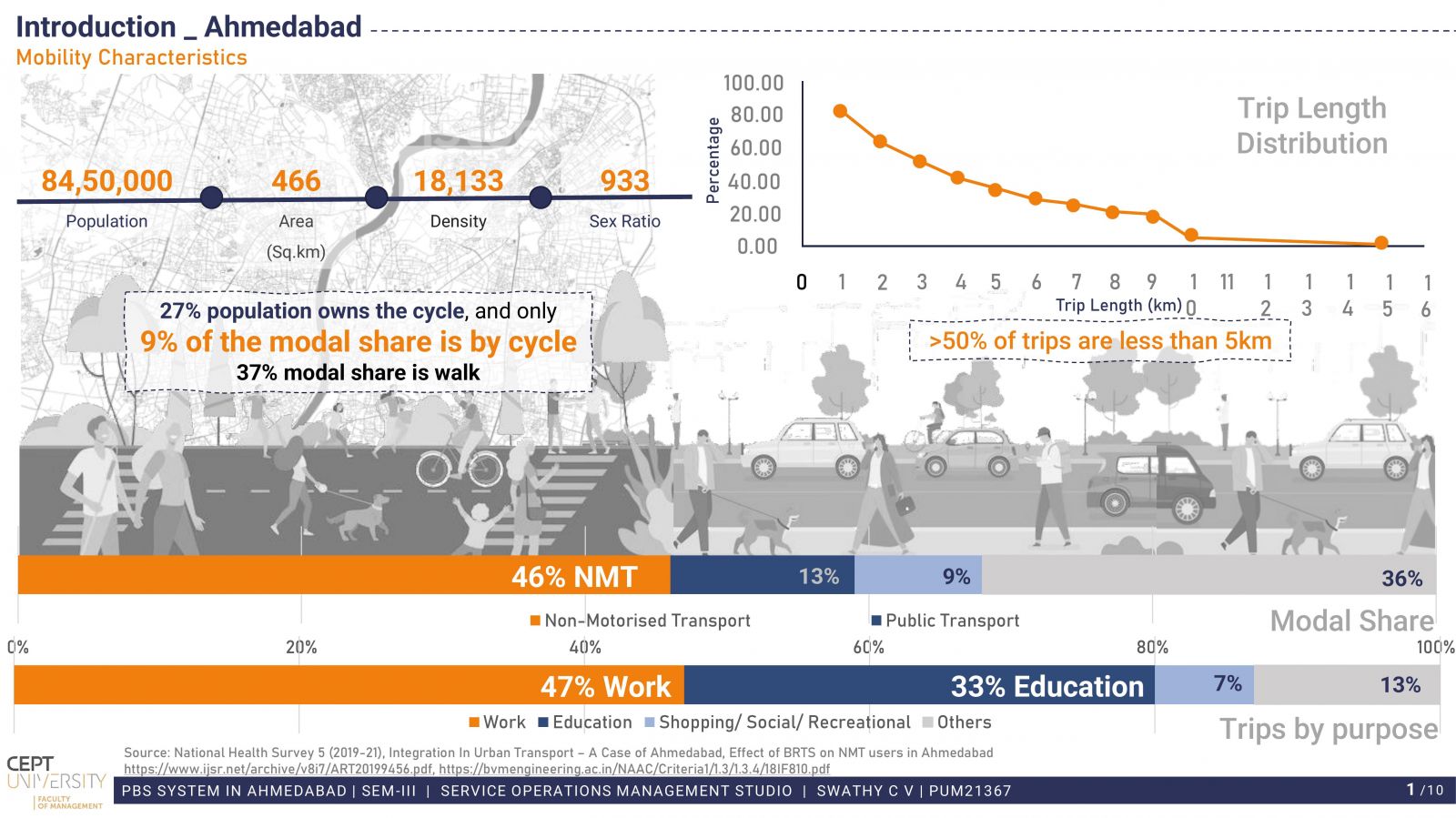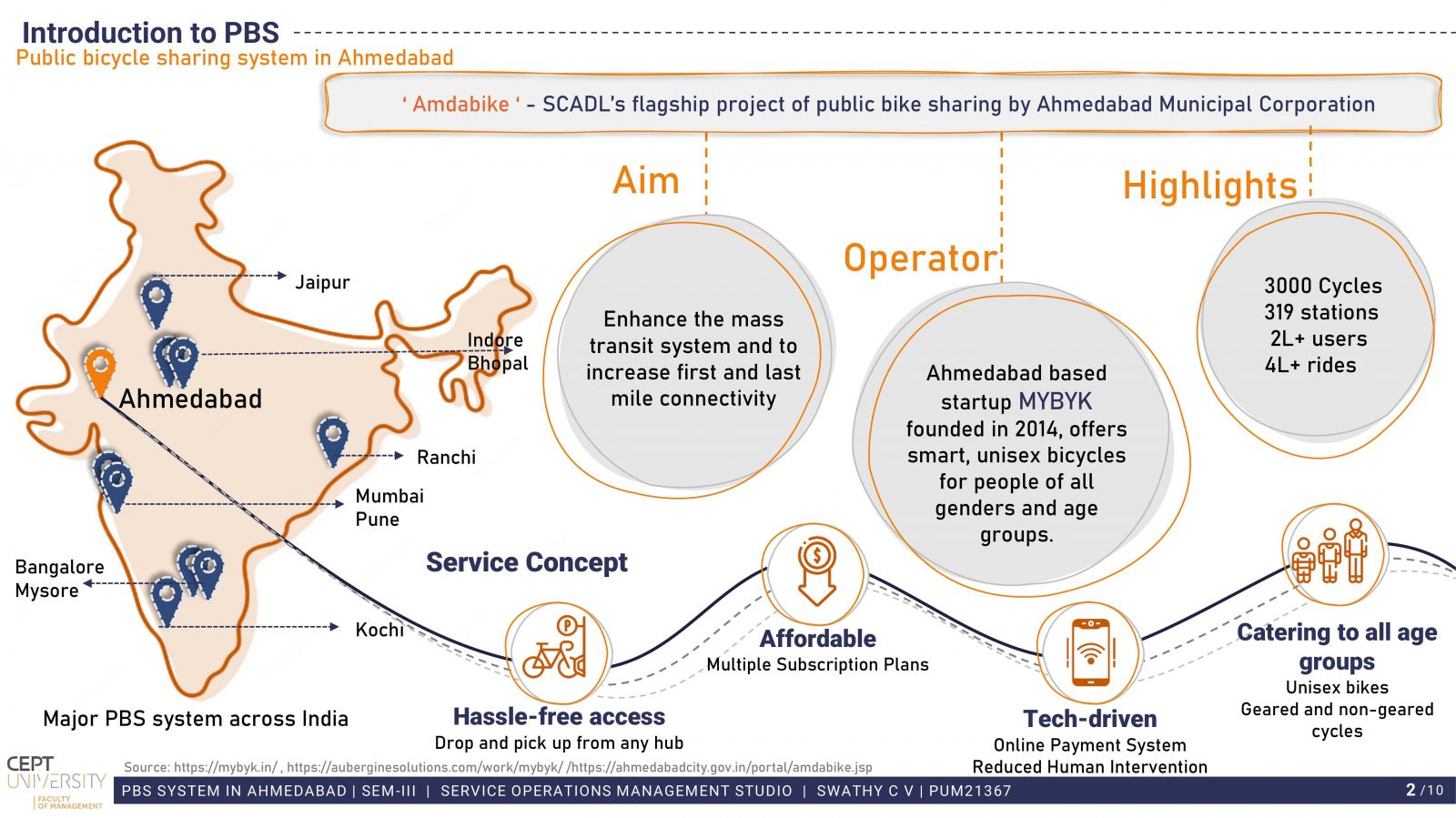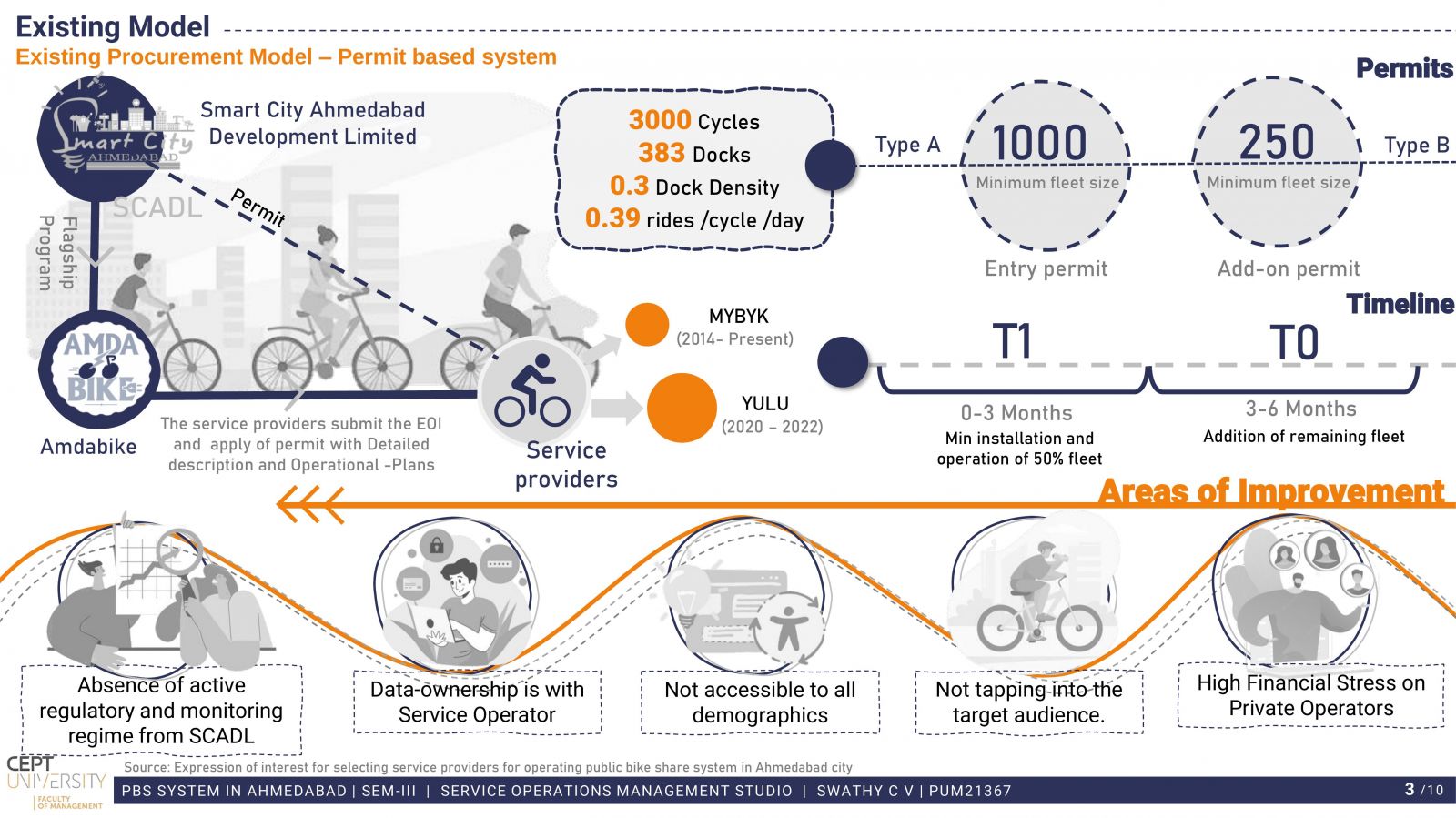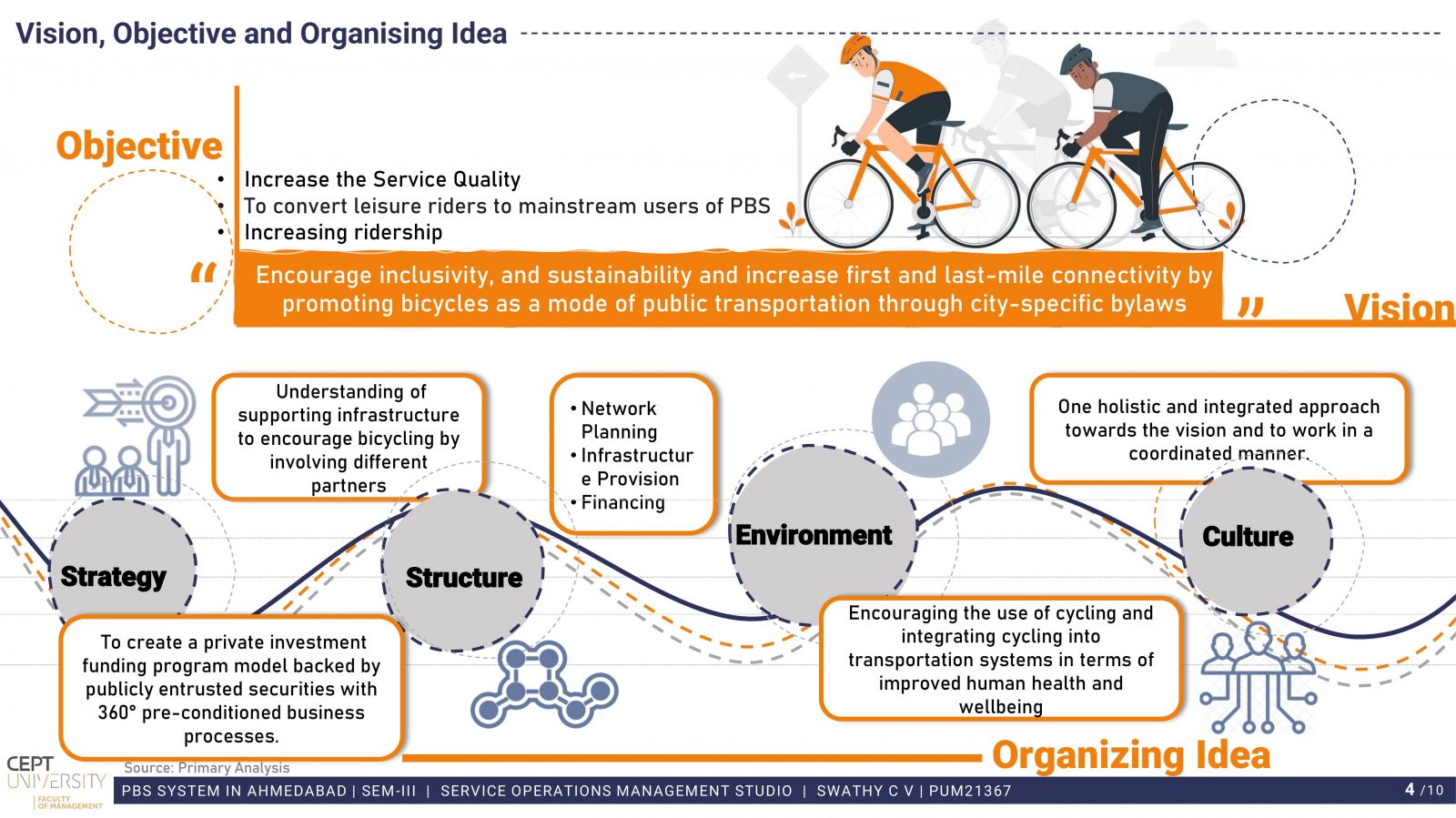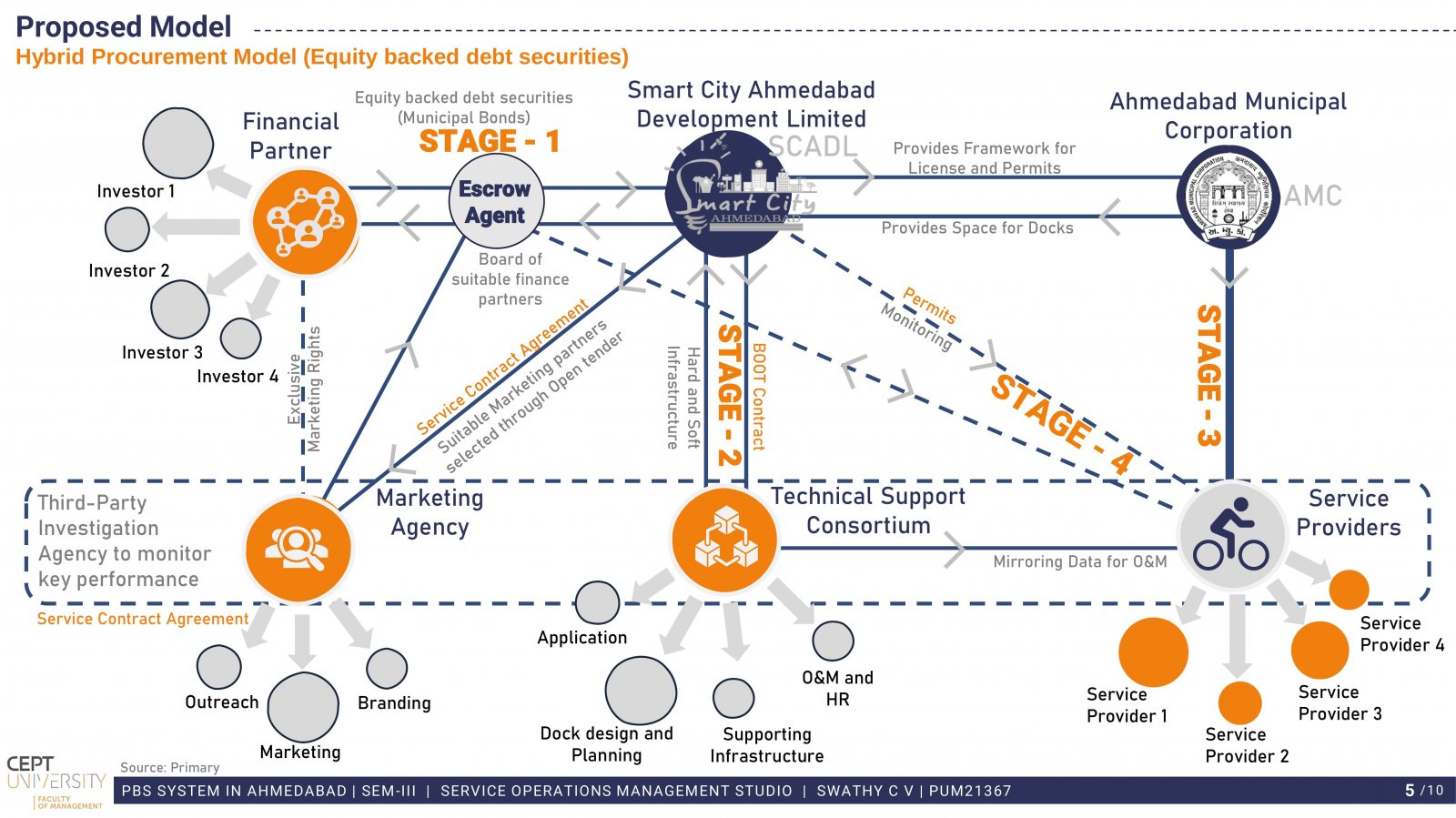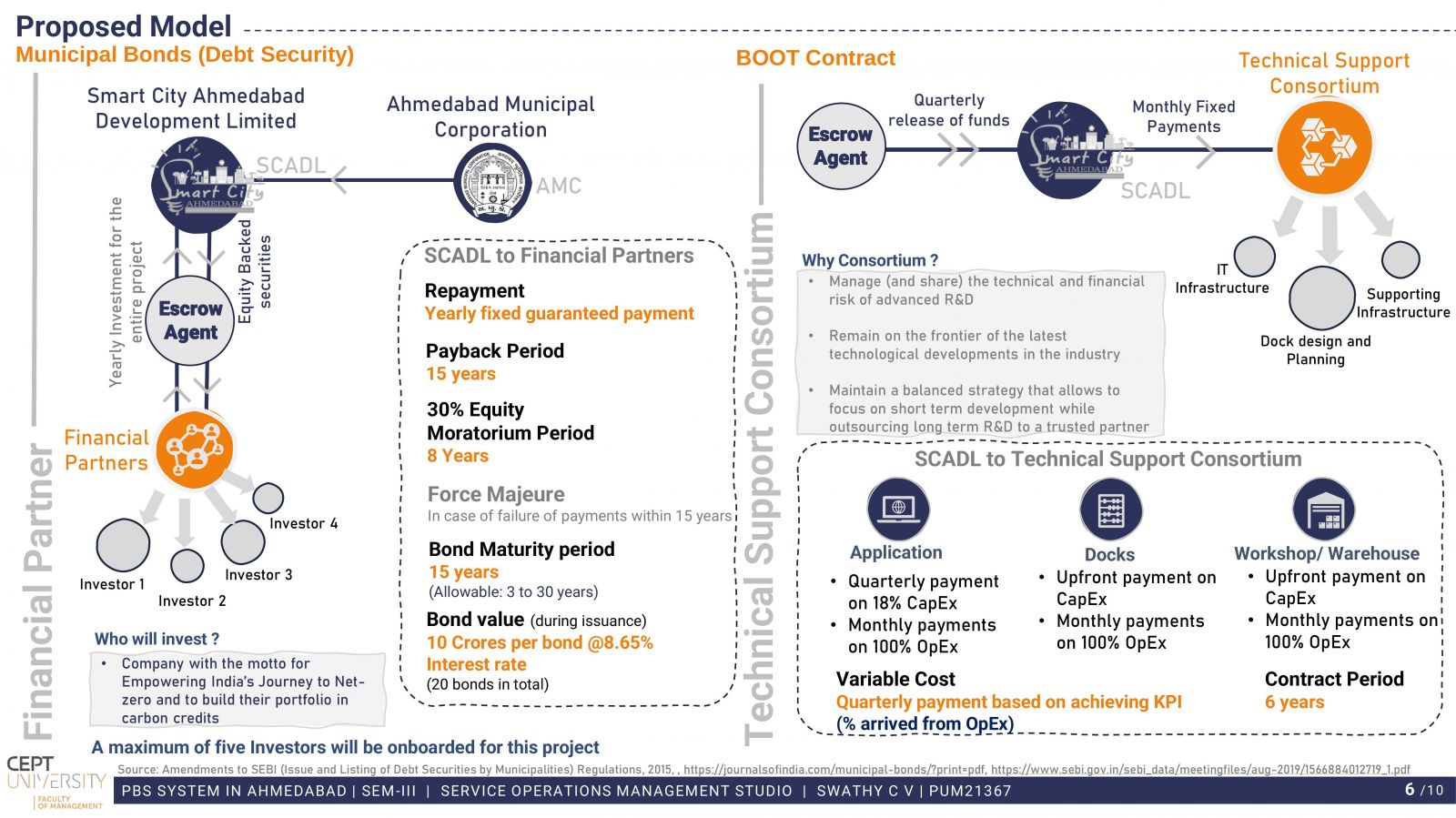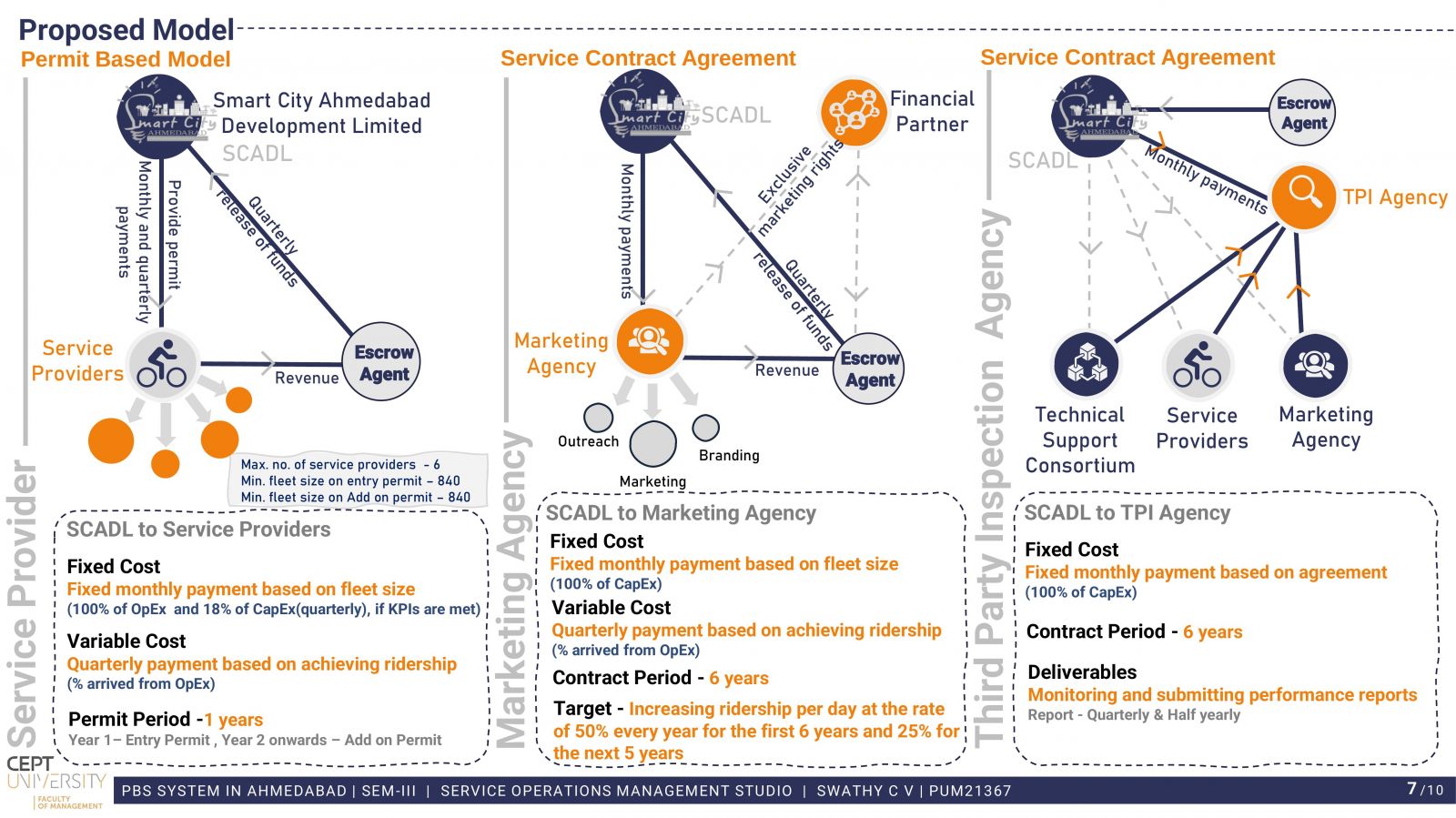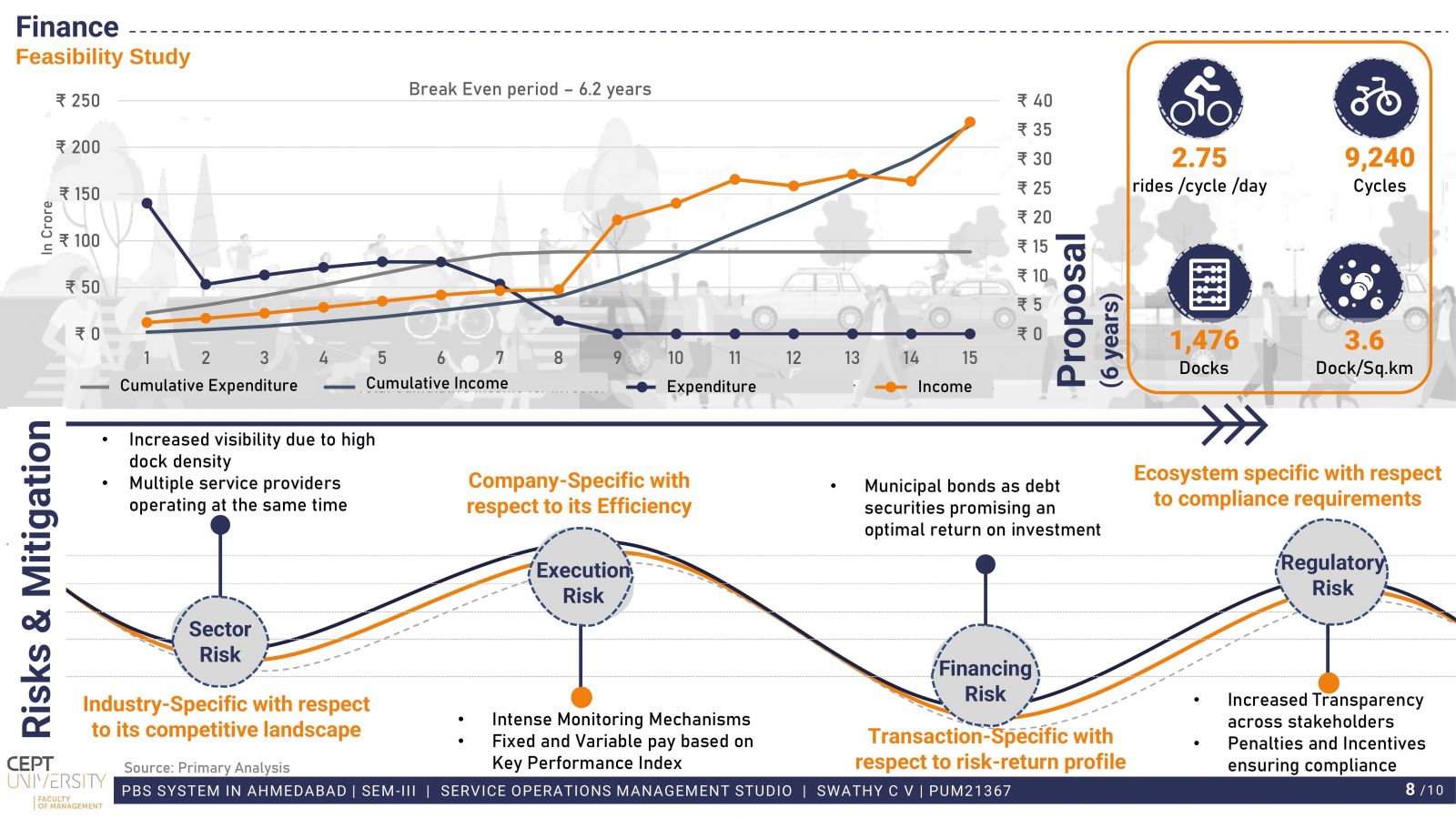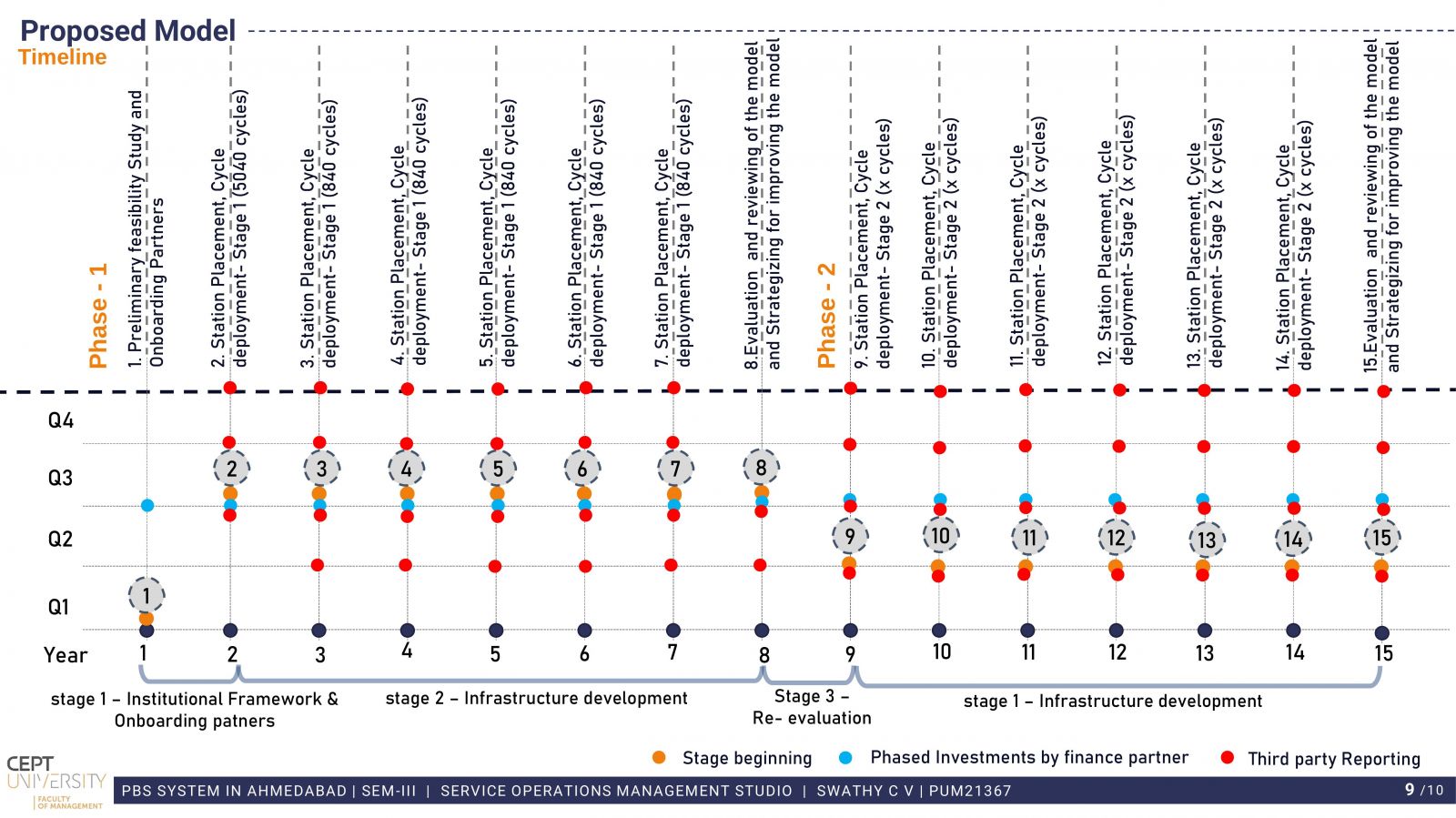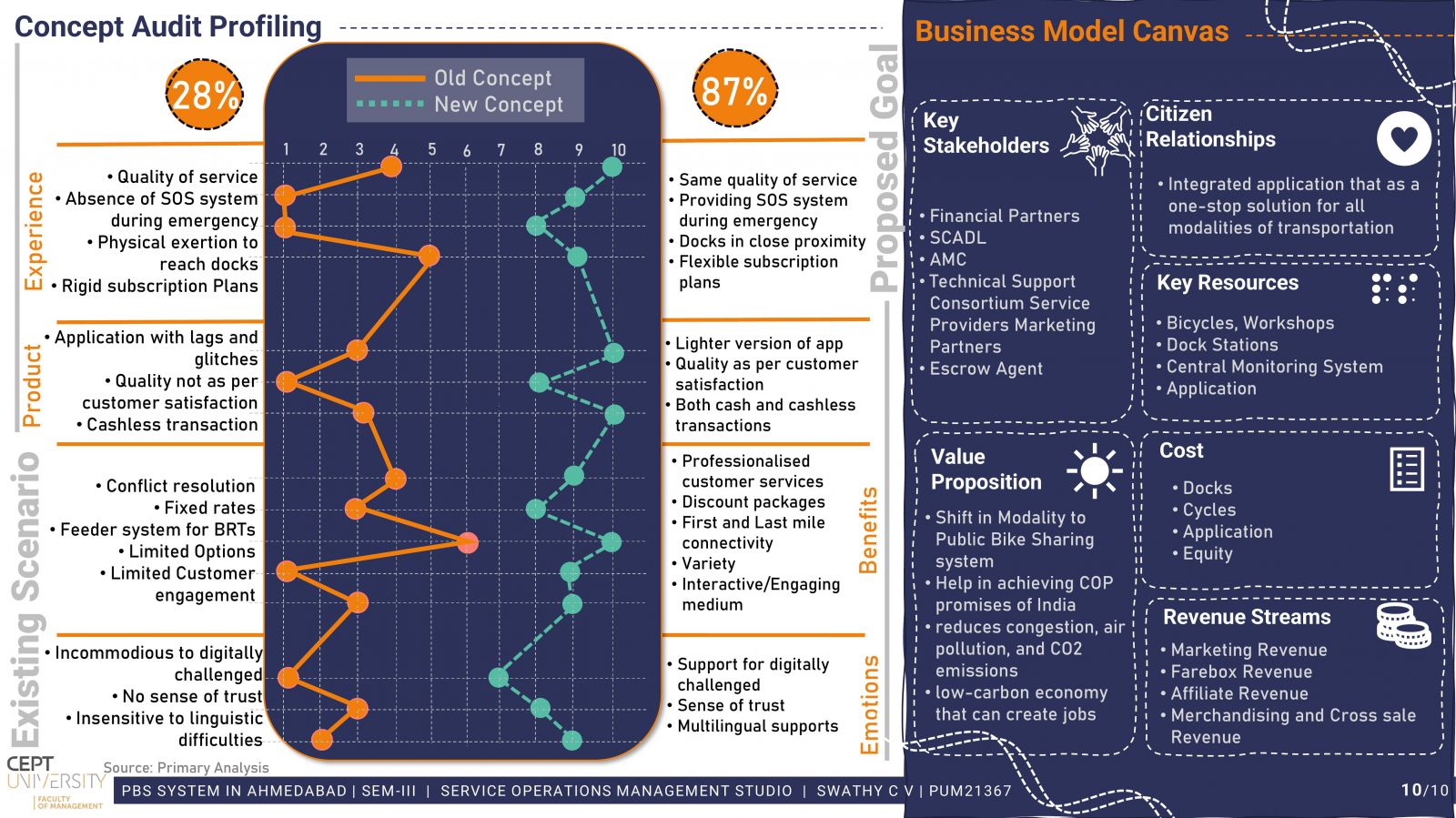Your browser is out-of-date!
For a richer surfing experience on our website, please update your browser. Update my browser now!
For a richer surfing experience on our website, please update your browser. Update my browser now!
As one of the few cities in the country that has facilitated Public Bike Sharing Systems for its citizens, Ahmedabad City has yet to fulfil its vision of making PBSS an efficient first- and last-mile connectivity ecosystem. Thus, through incentivizing and penalizing contract bundles with the government, the proposed model enhances the existing service delivery mechanism and increases ridership. For investors, operators, and regulators, a revenue model has been developed to forecast the critical investment and return for implementing an upscale of the existing public bike-sharing service.
View Additional Work